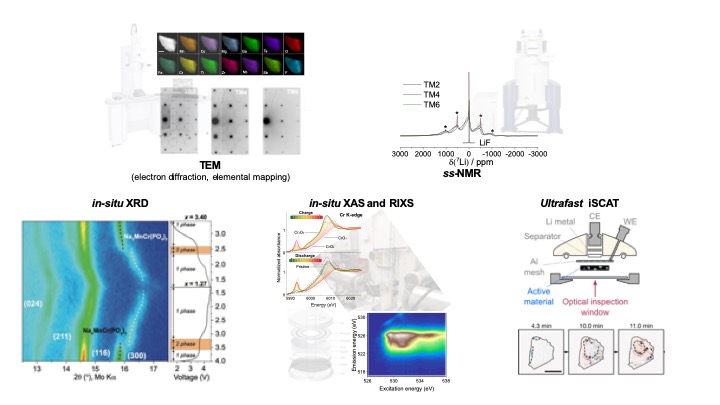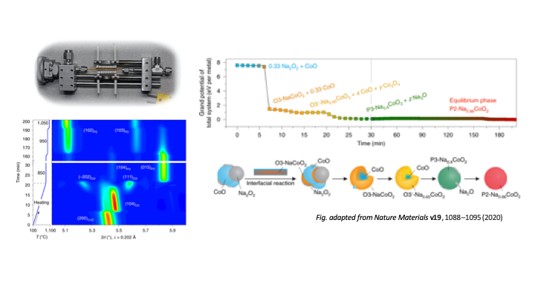Design and synthesis of next-generation energy storage materials
The tremendous success and growth of energy storage technology in a broad range of applications have long-lasting and far-reaching influence on our human society. Li-ion technology is so far the most promising and optimized component within the energy storage technology frame, which can further be divided into several sub-catagories, i.e., cathodes, anodes and electrolytes. Not only should we further enhance ionic transport and cycling stability of various components, but also seek for less resource-constrained candidates for energy storage.
I am experienced in the design and synthesis of various class of energy storage materials, especially cation-disordered rocksalt (DRX) materials and Ni-rich NMC cathodes, the optimization of which can be achieved from the delicate manipulation of overall composition, long-range crystal structure and local short-range ordering as well. Design strategies are usually proposed based on basic physical and chemical principles and evaluated combining electrochemical tests, characterization techniques and computational methods.
Development and application of advanced characterization techniques
The electrochemical performance of energy storage materials is primarily related to the structure of the materials and the reaction kinetics during operation. One must rely on various advanced characterization techniques, both in-situ (i.e., tracking the structure / kinetic information during the electrochemical cycling in real time) and ex-situ (i.e., stopping the components at different states of charge and performing various characterizations). I am a fan of developing and applying various techniques to probe the structure-property relationships and reaction kinetics in energy storage materials, including, but not limited to the following:
X-ray diffraction (XRD) and Pair-distribution function (PDF)
Transmission electron microscopy (TEM)
Solid-state nuclear magnetic resonance spectroscopy (ssNMR)
X-ray absorption spectroscopy (XAS)
Ultrafast interferometric scattering (iSCAT) optical microscopy

Investigation of the reaction mechanism of ceramic material synthesis
For decades, the synthesis of ceramic materials has been largely achieved via trial-and-error, and there is an increasing demand to thoroughly investigate the reaction mechanism in the solid state reactions in order to speed up the progess of synthesizing novel novel ceramic materials and their targeted functional optimizations.
The black-box of solid state reactions can be tackled combining temperature-depent characterization techniques (such as XRD and TEM) and density functional theory (DFT) calculations (predictive synthesis). These systematic tracking of the reaction pathways can elucidate the interplay between thermodymanics and kinetics so that we can understand the sequential reaction behavior during the heating process. This can further provide invaluable information on the synthetic protocol optimization, such as the choice of precursors, sintering steps and sintering temperatures etc.
